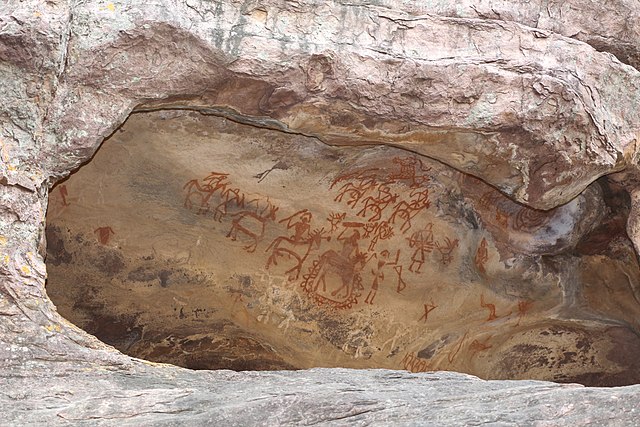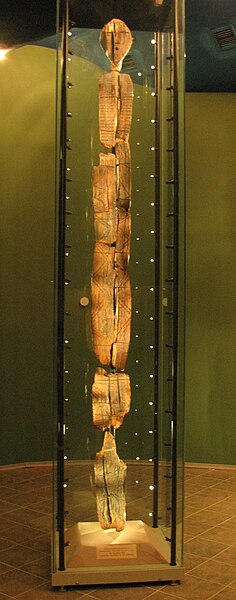The Bhimbetka rock shelters are an archaeological site in central India that spans the Paleolithic and Mesolithic periods, as well as the historic period. It exhibits the earliest traces of human life in India and evidence of the Stone Age starting at the site in Acheulian times. It is located in the Raisen District in the Indian state of Madhya Pradesh, about 45 kilometres (28 mi) south-east of Bhopal. It is a UNESCO World Heritage Site that consists of seven hills and over 750 rock shelters distributed over 10 km (6.2 mi). At least some of the shelters were inhabited more than 100,000 years ago.
Bhimbetka rock painting
Archaeological Survey of India monument number N-MP-225
One of about 750 rock shelter caves at Bhimbetka.
Bhimbetka quartzite towers
The Mesolithic or Middle Stone Age is the Old World archaeological period between the Upper Paleolithic and the Neolithic. The term Epipaleolithic is often used synonymously, especially for outside northern Europe, and for the corresponding period in the Levant and Caucasus. The Mesolithic has different time spans in different parts of Eurasia. It refers to the final period of hunter-gatherer cultures in Europe and the Middle East, between the end of the Last Glacial Maximum and the Neolithic Revolution. In Europe it spans roughly 15,000 to 5,000 BP; in the Middle East roughly 20,000 to 10,000 BP. The term is less used of areas farther east, and not at all beyond Eurasia and North Africa.
Reconstruction of a "temporary" Mesolithic house in Ireland; waterside sites offered good food resources.
The Mesolithic begins during the latest Pleistocene, characterized by a progressive rise of temperatures, between the end of the Last Glacial Maximum and the Neolithic Revolution during the Holocene. Evolution of temperature in the Post-Glacial period according to Greenland ice cores.
Mesolithic artifacts
The Shigir Idol, from the east of the Ural mountains.








